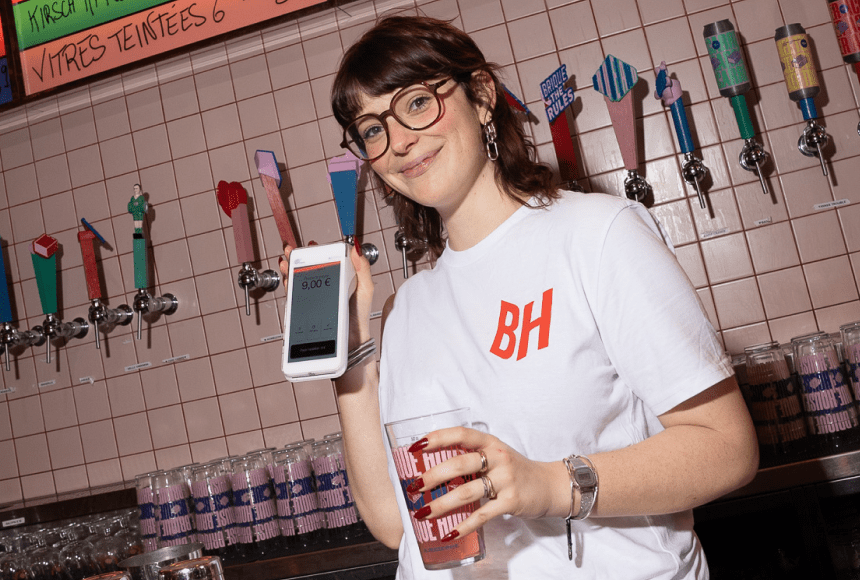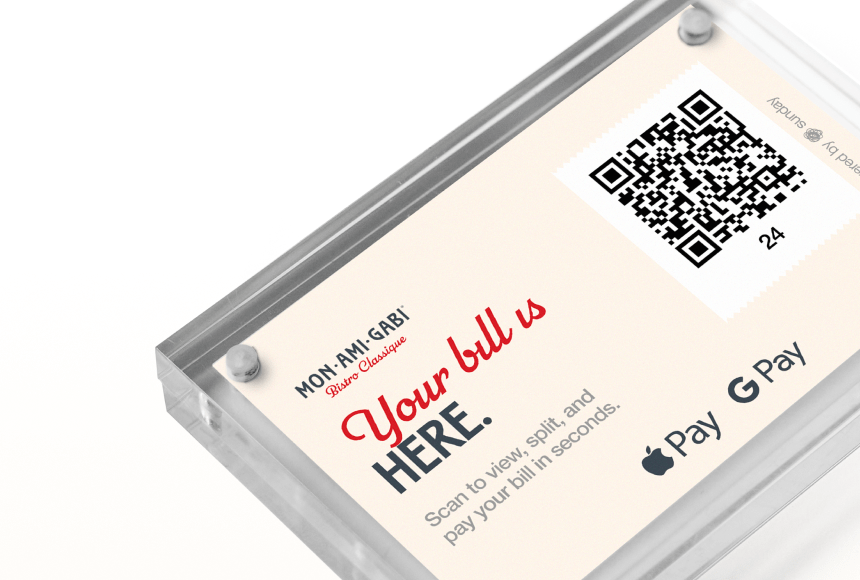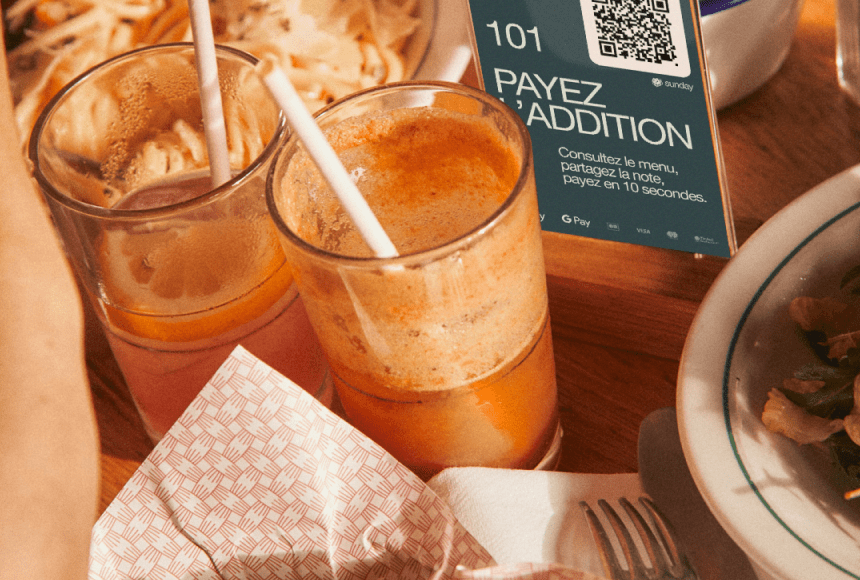
Moving Beyond the Basics: Unlocking the Power of a Connected Payment Terminal
The Modern Restaurant Landscape: A Quick Snapshot
Step onto any busy dining floor during peak hours and the energy is palpable—servers weaving between tables, chefs calling out orders, and guests happily chatting over their meals. In the midst of this hustle, payment often becomes a bottleneck, especially when everyone wants to settle up at once. Long lines at the counter, a short supply of card readers, and frazzled staff can quickly transform a wonderful meal into a frustrating checkout process.
For years, many restaurants relied on a basic, stationary payment device to process transactions. But now, connected payment terminals have rolled onto the scene, promising faster service and deeper integration with modern point-of-sale (POS) systems. With restaurant technology advancing at breakneck speed, you might wonder if upgrading to a connected terminal is truly worth it. What exactly do you gain, and is it just about hardware specs—or is there a bigger picture you’re missing?
Traditional Payment Terminal: Tried but Limited
A standard or “traditional” payment terminal often sits at a fixed location—maybe near your cash register or hostess stand. It’s been a familiar workhorse: you insert the card, maybe swivel the screen to the guest, collect a signature (or a PIN), and you’re done. Simple, right?
That simplicity is its strength, but also its biggest drawback. While these terminals are reliable, they rarely communicate with your main POS system in real time. Staff usually have to manually input the check total, or they might run back and forth to confirm orders. This extra step leaves room for human error, slows down the billing process, and can result in a line of customers waiting at the register.
Additionally, these older terminals often lack advanced security features or contactless payment options, which many diners now consider essential. If your restaurant thrives on quick turnover—like a bustling lunchtime bistro or a high-volume dinner hotspot—you might feel the limitations of a traditional device more acutely.
Connected Payment Terminal: The Integrated Approach
By contrast, a connected payment terminal links directly to your POS system and sometimes even to your inventory or customer loyalty programs. That means when a server inputs an order into the POS, it instantly syncs with the terminal. No more re-typing totals or toggling between multiple screens. In many cases, servers can even split checks and add tips without having to fetch a manager or reprint receipts.
But what sets a connected terminal apart the most is how it streamlines your entire operation. Want to accept contactless payments like Apple Pay or Google Pay? The latest connected terminals often include near-field communication (NFC) capabilities, letting diners tap and go. Worried about security? These devices typically come with advanced encryption, tokenization, or chip-based authentication to protect cardholder data.
Ultimately, the goal is to let your staff focus on people, not paperwork. That shift might sound small, but it can significantly enhance your guests’ dining experience—especially when the alternative is playing credit card tag with a stationary, outdated terminal.
The Tangible Benefits of Upgrading
So, is a connected payment terminal just a fancy gadget, or does it actually provide practical wins for your restaurant? Let’s dig in.
- Faster Turnaround: According to Restaurant Dive’s 2022 Tech Survey, many operators reported shorter transaction times once they switched to integrated solutions. When staff can quickly process payments tableside or at a flexible payment station, wait times drop and table turnover increases.
- Reduced Errors: Since transactions flow directly from your POS to the terminal, the risk of keying in the wrong total plummets. Fewer mistakes translate into less wasted time resolving billing disputes and more satisfied customers.
- Advanced Payment Options: Contactless, QR code, and mobile wallet capabilities are usually baked into connected terminals. This variety caters to modern diners who expect a frictionless checkout, much like they find at retail stores or coffee shops.
- Real-Time Reporting: Integrated systems let you capture sales data on the fly. You can track average check size, popular menu items, and peak transaction times without juggling multiple data streams.
- Enhanced Security: Many connected terminals include end-to-end encryption and are fully PCI-compliant, helping you safeguard sensitive information and maintain trust.
Together, these benefits aren’t just upgrades in technology—they’re improvements to your entire service flow, from seating to final farewell.
One Size Doesn’t Fit All: What’s Your Concept?
Before you decide that a connected payment terminal is your next big move, take a moment to consider your concept and clientele. Different types of restaurants have unique demands:
- Fast Casual: High-volume, quick-service spots see a constant churn of customers, especially during peak hours. Speed is king. A connected terminal can keep lines moving and reduce chaos at the counter.
- Full-Service Restaurants: White-tablecloth eateries may prioritize personal interaction. Servers often bring a handheld device to the table so the guest never has to leave their seat to pay. Quick and seamless, but still personal.
- Bar Settings or Taprooms: If you have guests ordering multiple rounds, a connected terminal that updates tabs in real time is a lifesaver. No more scribbled bar tabs or guesswork on who had the last IPA.
- Hybrid or Multi-Concept: A growing trend is to combine cafe, bakery, and retail under one roof. In that case, a connected system unifies all payment points and inventory tracking for each mini-concept.
By mapping out your operations, you can zero in on the features of a connected terminal that will bring the most value to your staff and diners.
Beyond Hardware: Creating a Customer-Centric Checkout
A connected terminal isn’t just about processing transactions. It’s also about making payment feel like a natural part of the dining experience. Think about how many times you’ve gone to a restaurant and had a fantastic meal—only to wait an extra ten minutes for the check. That delay can sour the overall impression.
When you integrate payment more fluidly into service, you do more than just speed up the process:
- Better Interaction: A server who can instantly pull up the table’s check avoids running to and from a central station. That extra minute can be spent asking about the meal, suggesting dessert, or chatting about the restaurant’s new chef.
- Discreet Billing: Some connected terminals allow you to split a check, add tips, or apply discounts without a big show. Guests can decide how to handle the bill quickly, maintaining the relaxing vibe you worked so hard to create.
- Opportunity for Feedback: If a diner pays directly on a device or via a QR code, you can invite them to leave a short review or rating on the spot. That immediate feedback loop boosts your online reputation and helps you catch any service lapses early.
By placing convenience at the forefront, you transform payment from a mundane chore into part of a positive, lasting impression.
Security and Peace of Mind
No restaurant wants to make headlines for the wrong reasons—like a data breach or rampant credit card fraud. When you stick with a traditional terminal, you might lack the most recent security protocols, leaving your business more vulnerable.
Connected payment terminals often come bundled with robust protective measures:
- Encryption: Sensitive card data is typically encrypted at the device and remains secure during the entire transaction.
- Tokenization: The system replaces customer card details with a randomized token, so your POS never holds actual card numbers.
- Automatic Updates: Because these devices are linked online, providers can push firmware and security updates automatically, keeping you compliant with industry regulations.
The net effect is fewer headaches for you and your staff. Guests also appreciate knowing their information is in good hands.
Where sunday Fits In
Looking beyond just physical card readers, many restaurants now incorporate solutions like sunday that use QR codes to let diners pay right on their phone. This can complement a connected terminal beautifully, giving your guests a choice. If they’d rather tap their phone to your device, that’s fine. If they’re more comfortable scanning a code and checking out on their own smartphone, that’s just as easy.
With sunday, customers can also tip and leave a review in one seamless step, potentially increasing gratuities and boosting your online presence. Instead of waiting for a slip of paper or searching for the server, diners can settle the bill as soon as they’re ready. For your restaurant, that might mean fewer bottlenecks—and for your staff, more time to focus on what they love: hospitality.
How to Make the Transition Smooth
Transitioning to a connected terminal or adding sunday to your workflow doesn’t need to be disruptive. With a clear plan, you’ll be up and running quickly:
- Assess Your Current Setup: Evaluate the strengths and weaknesses of your existing payment flow. Identify points where service slows or mistakes happen, so you know what to improve.
- Research Compatibility: Ensure that the terminal or QR-based solution integrates with your existing POS, inventory software, or loyalty program. Integration is where you’ll gain speed and real-time insights.
- Train Your Team: Spend time training staff not just on how to use the devices but on how to explain them to guests. A confident, well-informed team will make the rollout smoother.
- Pilot Before a Big Night: Test the system during a slower shift or among a small group of tables. You can fine-tune any hiccups without impacting your entire dining room.
- Monitor Feedback: Encourage your staff and diners to share thoughts on the new process. You’ll quickly see where it excels and where it might need small tweaks.
What the Numbers Say
If you’re still on the fence, consider the data. A 2023 analysis by the National Restaurant Association indicated that modern payment methods—like contactless and integrated POS solutions—can raise customer satisfaction scores by up to 25%. Faster service, fewer errors, and a greater sense of control for diners all play a role.
Meanwhile, internal studies from restaurants that adopt these technologies often show a noticeable drop in manual errors and a rise in overall guest spend. When payment is frictionless, guests tend to feel more at ease about ordering that extra dessert or specialty cocktail.
Checking the Cost vs. Value
It’s natural to be cautious about the price of new devices or additional software subscriptions. A connected terminal might be more expensive upfront than a traditional one. But the investment can pay for itself through:
- Increased Table Turnover: Faster payments mean you can seat the next party sooner.
- Higher Staff Efficiency: Fewer re-entered checks, reduced errors, and less time spent walking to and from a single register.
- Enhanced Guest Satisfaction: When diners are happy, they tip better and return more often.
- Improved Data Analytics: Track sales in real time and adapt your menu or promotions based on actual purchase patterns.
Over the long haul, these benefits often outweigh the initial costs, especially if you run a mid- to high-volume restaurant.
The Human Factor: Empowering Your Team
While technology can give your operation a serious upgrade, it’s your people who harness it. One of the biggest differences between a connected terminal and a standard setup is how it frees your staff to engage meaningfully with guests. Instead of wrestling with manual inputs or rummaging through stacks of receipts, they can focus on greeting tables, recommending specials, and fostering a friendly atmosphere.
When servers or bartenders feel confident about the tools they use, it shows in their performance. They’re more likely to upsell dessert or that top-shelf tequila, and they’ll handle busy periods with less stress. This morale boost often translates into lower staff turnover, saving you recruitment and training costs in the long run.
Weighing Your Next Step
Is it time to upgrade your tried-and-true but sometimes clunky payment system? If you value speed, security, real-time data, and more personalized service, a connected payment terminal could be a logical next step. Adding an option like sunday for QR-based pay elevates that convenience further, giving guests even more ways to settle their check.
Whether you manage a bustling bistro, a cozy café, or an upscale steakhouse, the essence remains the same. Diners today appreciate efficiency, transparency, and choice. By adopting connected solutions, you demonstrate a willingness to adapt to modern expectations and craft a memorable dining experience from start to finish.
So, if the question is, “What does my restaurant really gain?” the short answer is: smoother operations, satisfied guests, and a measurable lift in revenue potential. In an industry where every minute counts and every smile matters, that gain could be just the competitive edge you’ve been looking for.
Find out more today
Drop us your details below and we’ll reach out within the next 24h
The payment terminal to make your operation simpler.
Connected to your POS, we offer the only payment terminal specifically designed for restaurants.




